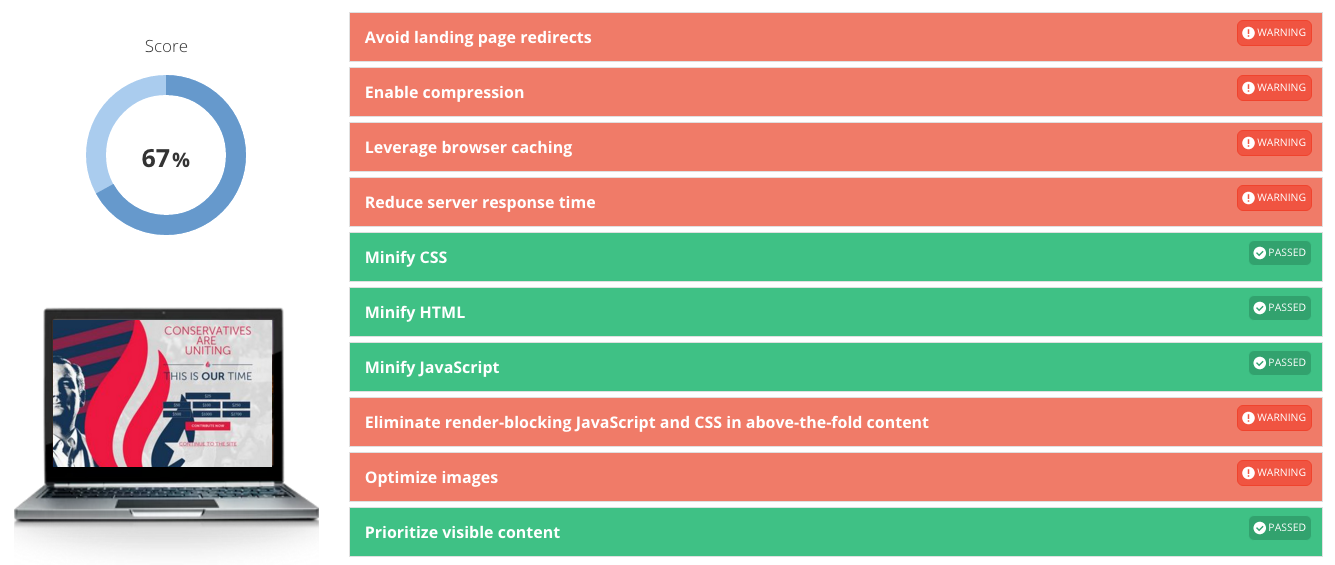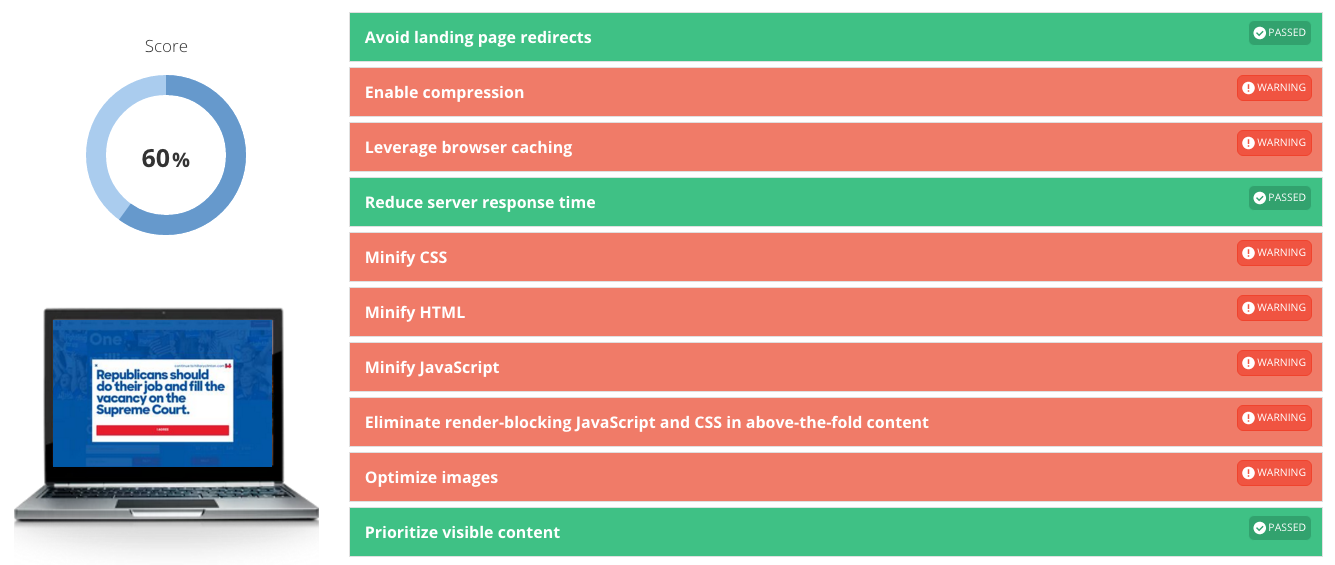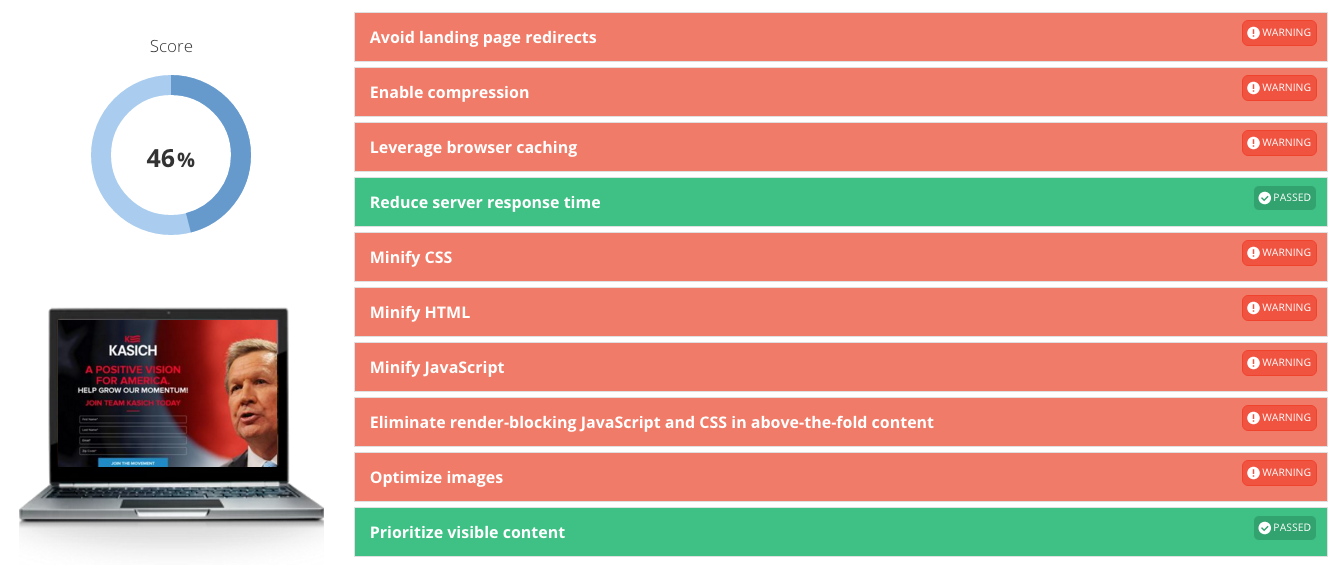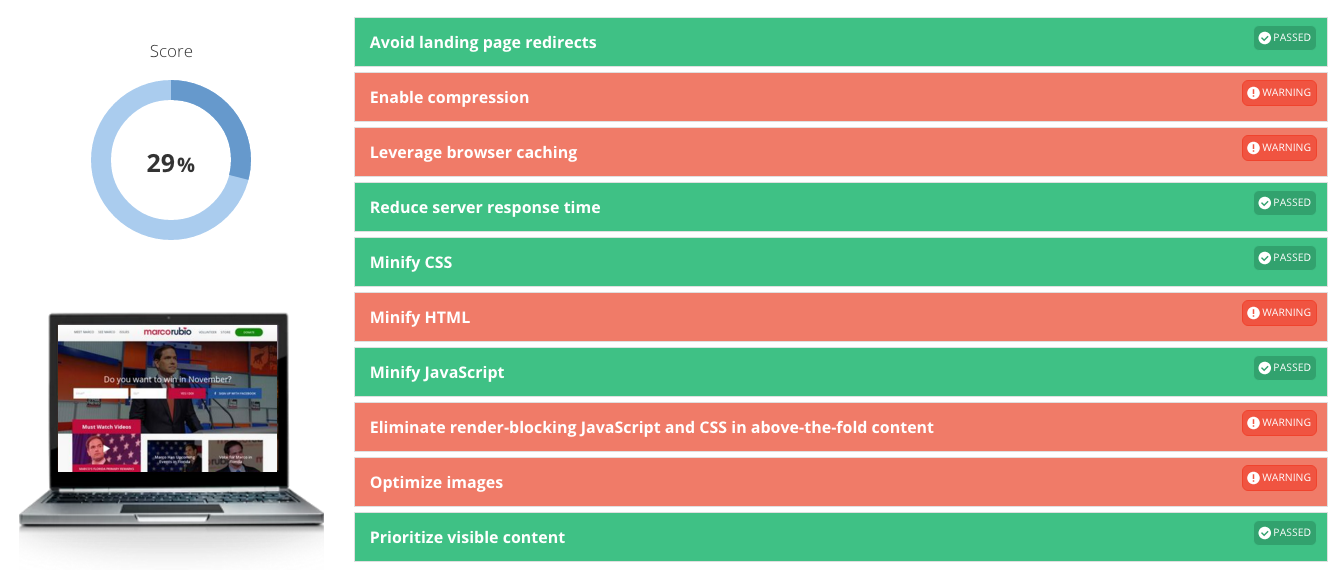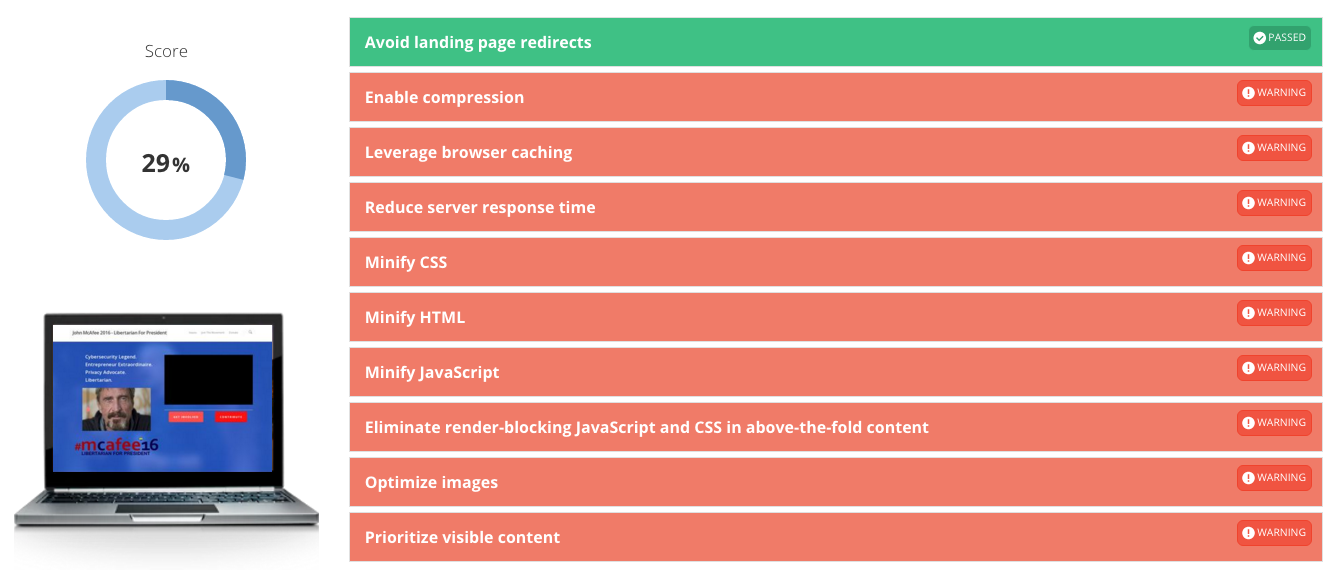[2016 Election Winner] Website Metrics Don’t Lie
How important is Internet presence for the 2016 presidential candidates? Over the course of Obama’s presidency, the Internet and social media have evolved more than anyone could have imagined. For perspective, the original iPhone was released in 2007 when the 2008 election cycle was starting to ramp up, and now nearly everyone has a smartphone. In fact, mobile Web experience has caught up to desktop.
Obama was the first president to embrace the Internet, rallying support through online channels, especially among young voters. An Internet presence is all but essential for increasing campaign visibility and spreading views.
Anyone who has been following the election knows the candidates have different viewpoints on the issues, but each campaign also has varied tech expertise. Here at Clickx, we are launching our Website Grader to rate any website on a variety of different SEO and usability factors.

Did we just uncover the 2016 election winner by reverse engineering the candidates website metrics?
We ran the numbers for each candidate and here’s what we found:
Traffic
Website traffic may seem like the most important metric, but it isn’t always a measure of success. High traffic coupled with a high bounce rate is generally indicative of other problems. For presidential hopefuls, traffic may be a sign of interest. Here are the number of organic visits to each candidate’s website in the past month:
-
Bernie Sanders: 583,530
-
Hillary Clinton: 501,630
-
Donald Trump: 388,280
-
Ted Cruz: 208,470
-
Marco Rubio: 54,470
-
John Kasich: 11,780
-
John McAfee: 0
With all the press about Trump, you may expect his organic traffic to be higher, but his website has fewer visitors than Sanders and Clinton. Many Sanders supports are Web-savvy, and the high traffic reflects this. By contrast, John McAfee, founder the antivirus company, is seeing virtually no visitors.
These numbers show the number of unique visitors who came to the candidates’ websites on their own by entering specific keywords into a search engine. Alternatively, some candidates’ teams may be engaging in pay-per-click efforts to attract more visitors. The most successful in the past month was Hillary Clinton with 40,330 paid clicks. None of the others were even close. In fact, Marco Rubio only got three paid clicks. Because most presidential hopefuls are highly visible, organic search can be more effective than budgeting for paid search, especially because many of the keywords are name-based and have less competition.
Links
The number and quality of backlinks a candidate’s website has helps establish a trust flow score. Here is how the candidates rate on number of backlinks:
Hillary Clinton led in backlinks, but sheer numbers aren’t the only thing Google evaluates when determining site rank. Diverse referring domains have an impact on ranking. Trust flow is predicting how trustworthy a page is based on how trustworthy sites tend to link to trustworthy neighbors. Websites not only need links, but they need to be links from quality pages. Clinton had a trust flow score of 60 percent, while Donald Trump was at 28 percent. This was lower than any other candidate besides McAffee, who does not have much of a Web presence.
Overall Usability Score
Google uses a number of factors to determine what kind of user experience a website offers, such as website speed, page redirects, enabling compression, reducing server response team, minifying CSS, JavaScript, and HTML, optimizing images, and prioritizing visible content, among others. Here is how candidates scored overall:
-
Trump: 87 percent
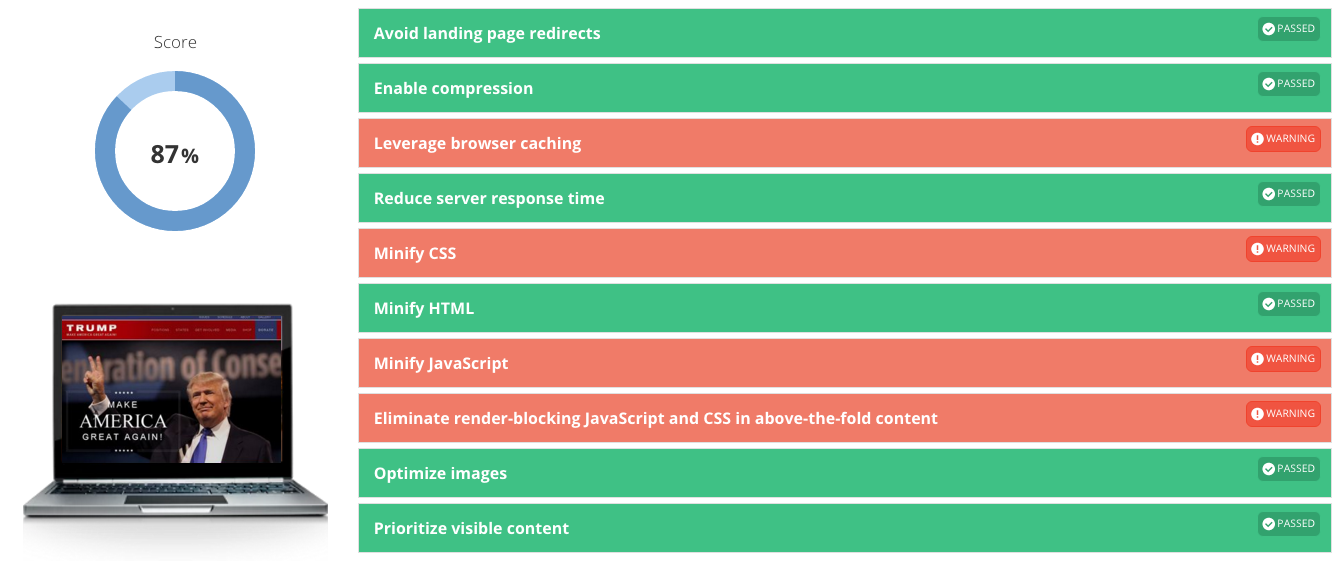
-
Sanders: 72 percent
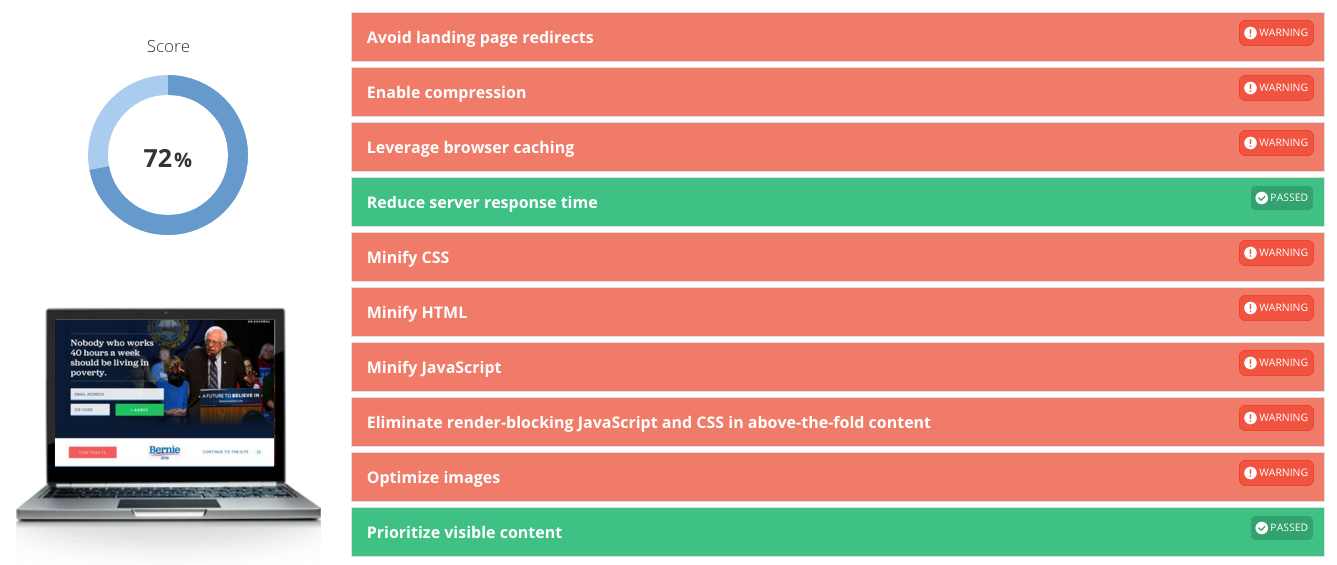
-
Cruz: 67 percent
-
Clinton: 60 percent
-
Kasich: 46 percent
-
Rubio: 29 percent
-
McAffee: 29 percent
Some of these experience factors carry more weight than others. In particular, slow loading speeds can harm a website’s overall rating. Trump’s website only had four warning areas in terms of experience. Sanders’ site only passed in two categories—reducing server response time and prioritizing visible content—but he ranked second overall.
Ultimately, a lot of different things go into determining where websites stack up. If you’re interested in finding out where your business ranks compared to your competitors, try Clickx’s free Website Grader for yourself.















